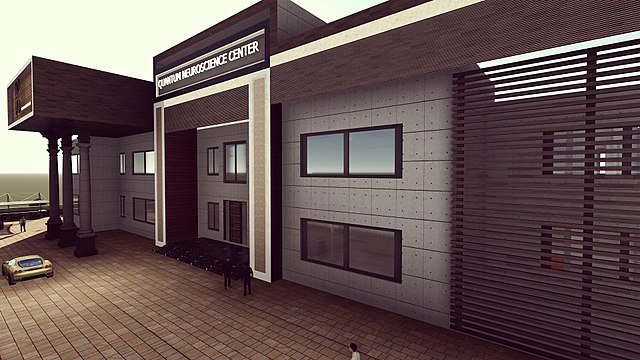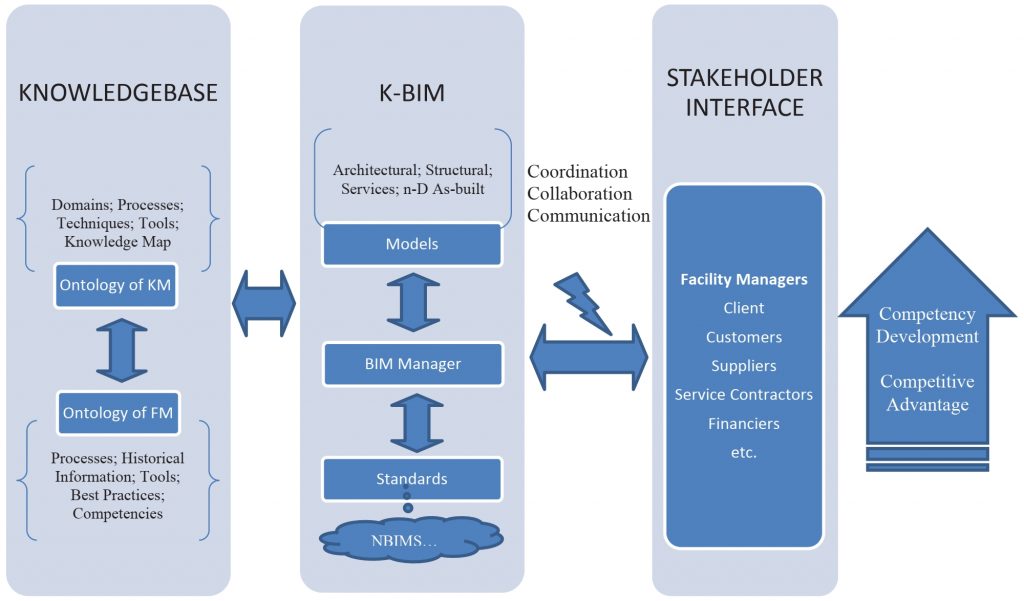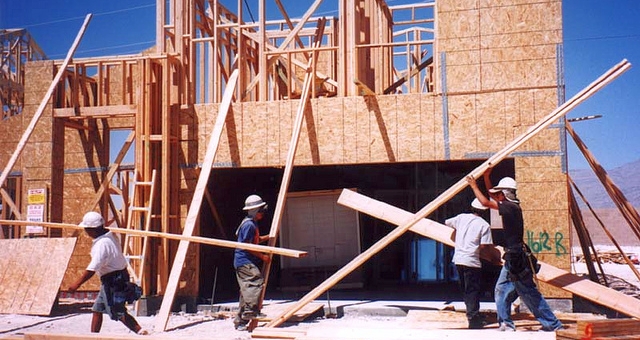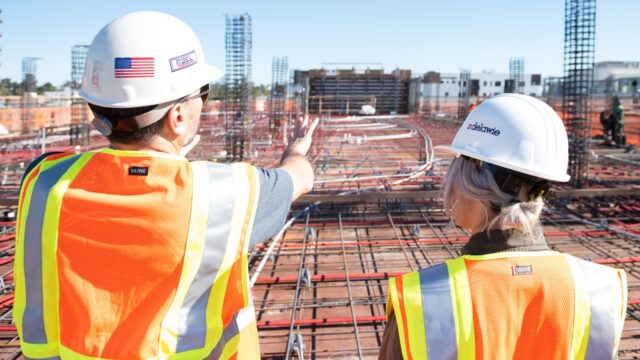
How KM can support Building Information Modeling (BIM) for facility management
This article is part of an ongoing series looking at knowledge management (KM) in the building and construction industries.
Described as a ‘game changer’ for built assets, Building Information Modeling (BIM) is being widely adopted across the world. For example, the UK Government has made it mandatory for all centrally funded work to be undertaken using BIM, and a National Building Information Modelling Initiative is being advanced in Australia.
The United States National Building Information Model Standard Project Committee defines BIM as:
Building Information Modeling (BIM) is a digital representation of physical and functional characteristics of a facility. A BIM is a shared knowledge resource for information about a facility forming a reliable basis for decisions during its life-cycle; defined as existing from earliest conception to demolition.
A basic premise of BIM is collaboration by different stakeholders at different phases of the life cycle of a facility to insert, extract, update or modify information in the BIM to support and reflect the roles of that stakeholder.
BIM is intended to be applied across the whole life cycle of a built asset, including in the design, construction, and facility management phases. However, to date, BIM has been used primarily in design and construction, with BIM for facility management still in its infancy.
As part of the RealKM Magazine series KM in the building and construction industries, I’ve already explored emerging research in regard to knowledge management (KM) and BIM for the design and construction phases. One article in the series explored a shift from BIM-based information management to BIM-based knowledge management, while another described a case study that shows proof-of-concept of a SocioBIM system for knowledge management.
But what about KM and BIM for the facility management phase?
To help advance BIM for facility management, a recent (2017) paper1 identified the significant aspects of BIM-enabled facility management based on reviews of a large pool of both academic and industry-based articles. Both benefits and challenges were captured.
The paper authors alert that while the focus has so far been on BIM for the design and construction phases, BIM for the facility management phase is arguably more important. This is because the ongoing maintenance and operational costs of a building far outweigh the original design and construction cost. The authors state that “For a typical facility, it is believed that less than 15 per cent of the life-cycle cost is taken up by design and construction, while more than 85 per cent is taken up by [facility management].”
From their research, the authors recommend that knowledge management strategies should be considered during the strategic and implementation planning stages of facility management so that the early involvement of stakeholders can contribute to the optimisation of the process. They also advise that collaboration and facility management are connected.
K-BIM for facility management
An earlier (2014) conference paper2 goes further by proposing knowledge-based Building Information Modeling (K-BIM) for facilities management.
The paper author first identifies the core competencies of a facility manager, which he lists as:
- Communication – Communication plans and processes for both internal and external stakeholders
- Emergency preparedness and business continuity – Emergency and risk management plans and procedures
- Environmental stewardship and sustainability – Sustainable management of built and natural environments
- Finance and business – Strategic plans, budgets, financial analyses, procurement
- Human factors – Health, protection of environment, security, employee development
- Leadership and strategy – Strategic planning, organizing, staff management, leading the organization
- Operations and maintenance – Building operations and maintenance, occupant services
- Project management – Oversight and management of all projects and related contracts
- Quality – Best practices, process improvements, audits and measurements
- Real estate and property management – Real estate planning, acquisition, and disposal
- Technology – Facility management technology, workplace management systems.
He then proposes a K-BIM framework (Figure 1) that is based on the premise that BIM models of the constructed facilities would facilitate the processes of facility management, with BIM playing an important role in the development of the core competencies of a facility manager.

The three components of the K-BIM framework are:
- Knowledgebase component – Consists of two parts. The ontology of KM includes KM processes, knowledge domains, KM tools (techniques and technology), and knowledge mapping. The ontology of facility management includes facility management processes, historical information, and best practices in facility management. It would also have the definition, assessment guidelines, and performance criteria of the various core competencies of facility management as well as competency mapping.
- K-BIM component – Consists of the BIM models of the constructed facilities and the associated standards such as the United States National Building Information Model Standard. These are managed by the BIM managers. The data/information present in the models depends heavily on the knowledgebase as they are context-specific. Whenever there is a request for information from any stakeholder, the knowledgebase is referred to before returning a result. The data/information present in the BIM models is primarily knowledge-driven rather than information-dependent. Hence, this becomes the crucial component of the proposed K-BIM.
- Stakeholder interface component – Various stakeholders involved in the project/facility, especially facility managers, should use this interface to interact with the K-BIM for problem-solving or decision-making. Based on the context of the query, the K-BIM returns appropriate information derived from the knowledgebase that would facilitate the competency development of the manager as well as better facility management.
The author suggests that the proposed framework can be implemented by first building the knowledgebase. Then BIM models should be integrated with the existing standards and protocols to achieve the intended goals such as coordination, collaboration, and communication across various stakeholders, and this needs to be moderated by the BIM managers. The stakeholder interface should be integrated with workflow management systems to maximise operational efficiency.
Header image source: Wikimedia Commons, CC BY-SA 4.0.
References:
- Edirisinghe, R., London, K. A., Kalutara, P., & Aranda-Mena, G. (2017). Building information modelling for facility management: are we there yet?. Engineering, Construction and Architectural Management, 24(6), 1119-1154. ↩
- Charlesraj, V.P.C. (2014). Knowledge-based building information modeling (K-BIM) for facilities management. In ISARC. Proceedings of the International Symposium on Automation and Robotics in Construction (Vol. 31, p. 1). Vilnius Gediminas Technical University, Department of Construction Economics & Property. ↩
Also published on Medium.




